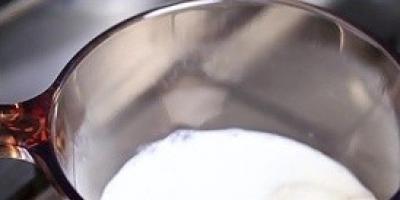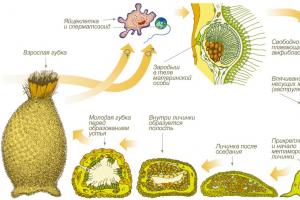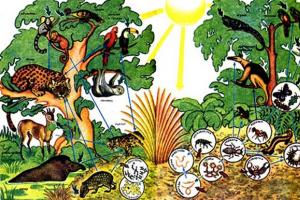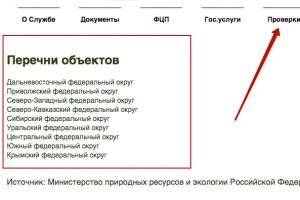This flower is especially famous among those who are interested in traditional medicines. This unique plant It can stop bleeding, fight inflammation, and have an antiseptic effect. The article reveals detailed information about such a plant as in open ground which many gardeners are interested in. This information will help those who want to have this flower in their garden to properly grow, care for, replant and use it in medicinal purposes. The plant was named after the German botanist Bergen, but its homeland is considered to be Asia.
Scope of use of the plant
Since ancient times, the plant has been actively used by healers to treat inflammatory processes, stop bleeding and as an antiseptic for treating wounds. The plant was used for women's diseases, and for men. Moreover, the flower was excellent for dyeing fabrics and tanning leather. Very often it was used as tea leaves instead of tea. Naturally, with so many beneficial properties, many wanted to know how to plant bergenia correctly. followed by it for various diseases - these issues will be discussed below.
Bergenia as a decoration

If we talk about simple things decorative property bergenia, it is often used for landscaping the area. Since, thanks to its dense vegetation, the plant grows well in the shade and can cover the soil well, it is planted to decorate wooded areas. Bergenia looks very impressive together with those flowers that are not similar to it either in the form of foliage or color scheme inflorescences. Very often, landscape designers use bergenia to emphasize the line of stones or decorate the border in a flower garden.
Bergenia: planting and care in open ground, varieties and properties
Before you start breeding a plant, you need to carefully study the information about it. It is recommended to learn as much as possible about bergenia. Planting, care, varieties - all these issues should be thoroughly worked out. There are many different varieties bergenia. The most common of them:
- thick-leaved, medicinal;
- cordate;
- purple;
- Pacific, multi-colored;
- hybrid varieties of bergenia, known as Kukla, Evening glow, Bergenia round and many others.
All species differ in the color of leaves and flowers, as well as the shape of the leaves. Bergenia flowers can be pink, purple, or red. Leaves may have jagged edges, wavy or heart-shaped.
Bergenia: cultivation, care, planting. What do you need to know?

A common feature of the plant is that it is a very picky flower that tolerates frost well. Planting bergenia in your garden and caring for flowers will not take much time and attention. You just need to follow all the rules, and the flower will delight you year after year. So, bergenia has several properties that make it attractive to gardeners:
- ability to grow in shady places and in open sun;
- the ability to plant a flower in different soils: dry or moderately moist;
- excellent frost resistance;
- The plant is unpretentious; it can grow for many years without replanting (incense can grow in the same place for up to eight years).
Plant care
So, have you decided to grow bergenia? Planting and care in the open ground will require several actions, by performing which you guarantee yourself success in the breeding process.
- The flower loves to be watered regularly.
- It is necessary to clear the plant of old foliage in the spring, while shortening too long shoots.
- Bergenia needs to be nourished, especially after the flowering process has passed. It is during this dormant time that the plant begins to form new rosettes. The best fertilizer There will be a tablespoon of Kemir Combi, diluted in ten liters of water.
- Periodically it is necessary to loosen the soil around the flower to avoid drying out or overheating.
Soil selection

The only thing that bergenia cannot tolerate is high humidity and stagnant moisture. Considering the plant’s homeland, the flower loves rocky, dry (but not overdried) soil or medium humidity. Growing in nature, bergenia itself retains moisture in the soil, thanks to the thick leaves that cover the ground. In the garden, we remove excess old leaves and do not allow the plant to control its own humidity level. Therefore, you need to monitor watering and not overdry the soil. Bergenia grows well in soil with the following proportions: one part turf and two parts sand and small stone. A mixture of humus (one third), sand (one third) and loamy soil (one third) is suitable as a substrate.
Reproduction

Bergenia can be propagated both by seeds and by cuttings. If the seed method is chosen, then they can be planted in two ways:
- Planting after harvest. After collecting the seeds, you need to prepare the soil. Having dug and leveled the area, place the seeds on the soil and sprinkle with a thin layer of earth and sand. With the arrival of winter, this area needs to be covered with leaves. Bergenia will develop gradually; for two years you need to monitor the seedlings and water them regularly.
- Planting in May. Seeds germinate on average in a couple of weeks. Once it reaches ten centimeters in length, the bergenia can be transplanted to the place chosen for permanent cultivation. In four years, the plant will already bloom in full force in your garden.
With the cutting method, you need to choose the healthiest bushes. In the summer, after flowering has passed, you need to cut off part of the root with leaves and buds. It is best if there are about three buds. There should also be two or three leaves. The cuttings need to be planted in loose soil, placing the roots at a depth of 4 cm from the surface. At proper care Bergenia will begin to bloom in the third year.
Summarizing

You can talk a lot and for a long time about everything that concerns such a plant as bergenia. Planting, care, reproduction, diseases and pests - these issues concern many gardeners. But in the end, all the information boils down to the fact that this plant requires minimal effort for cultivation. Even such a topic as pests practically does not concern bergenia. He is nearly invulnerable to most of them. Sometimes bergenia can be attacked by a fungus. In this case, the leaves become covered with brown spots, then the leaves become grayish-brown, and in their lower part a white coating. Having noticed such symptoms, you need to remove the diseased leaves and spray the bergenia with anti-fungal liquid (Bordeaux). Also, bergenia does not like slugs, which sometimes appear in our garden. In all cases, you need to resort to standard methods of pest control and treat the plant special means in accordance with the instructions. At the end, I can only add advice: grow bergenia, planting and caring for it in open ground will not take much time, and the results of your work will cause the envy of your neighbors.
IN Lately decoration comes into fashion summer cottages V natural style, and the ideal plant for this could be the perennial bergenia (lat. Bergenia) or bergenia - the Saxifraga family.
Having planted this plant, from early spring until autumn frosts the site will be adorned with a plant with decorative ornamental leaves of dark green color and pink panicles of flowers.
In addition to its decorative qualities, bergenia is healing plant, widely used in folk medicine for the treatment of many ailments. The plant is quite unpretentious, so every gardener can grow bergenia.
Description of the plant
Bergenia is a perennial plant belonging to the Saxifragaceae family. Widely distributed in the northern regions, where it grows in the wild. In the regions middle zone it is used as landscaping and decoration of summer cottages, gardens, and vegetable gardens.
The plant has gained popularity among summer residents and landscape designers due to its unpretentiousness and external characteristics, which are attractive and decorative. Large, dense, green bergenia leaves, similar in appearance to cabbage leaves, turn red in the fall. Flowerbeds and areas decorated with bergenia become very beautiful in autumn.
In April, the period of formation of peduncles up to 50 centimeters long begins. The bergenia inflorescence itself looks like a panicle, with large quantities small flowers. The flowering period begins in May and lasts until June-July. The petals of the inflorescences have a color depending on the variety:
- pink,
- red,
- white,
- purple,
- purple.
Bergenia is pollinated by insects during the flowering period. Flowering time can vary from April to June - it depends on the region of growth.
At the end of the flowering of the bergenia, a nut with a large content of seeds, 2 mm in size, appears.
Interesting: wild plant blooms white and pink, but botanists tried their best and bred many varieties of bergenia, with various shades and decorative qualities. A plant planted around ponds looks very impressive.
Types and varieties
Cultivated varieties of bergenia were bred using wild plant species.
It is worth noting that in nature there is more than 10 plant varieties, thanks to which decorative, garden varieties of bergenia were obtained.
Let's look at the most common and popular ones:
- Thickleaf (B. crassifolia)- one of the common plants, 50 cm high. It blooms in a dark pink shade (in the title photo), the flower is up to two centimeters in diameter. The leaves have a light green shiny hue in spring and summer, and red-brown in winter. The bush is large - height 50 cm.

- Pacific (Bergenia pacifica kom.)- a fairly large plant, reaching a height of up to 50 centimeters. It has a reddish peduncle with pink flowers resembling small bells. Flowers may have a lilac tint. The leaves are ellipsoidal, hard, leathery, dark green, turning red in autumn.

- Heartleaf (B. cordifolia) Red Star– a medium bush, up to 35 centimeters, but it is worth noting that the height may vary depending on the growing conditions. It blooms depending on the variety; the inflorescences can be either pink or bright purple. The decorative effect of this plant is added by large, lush, heart-shaped leaves, which can have different colors. May bloom twice a year.

- Schmidt's bergenia (B. schmidtii)- a very unpretentious plant, popular in Europe. The difference between this variety is that it has small wings that beautifully frame the leaves along the edges and at the petiole. Blooms bright scarlet. This variety of bergenia is also distinguished by the fact that its leaves are matte and acquire a blue tint in the fall.

- Badan Tubby Andrews- a unique plant obtained by hybrid means. Its leaves are very decorative, as the dark green color has white, yellow veins and spots. In autumn the leaves turn red-orange. Bush 30 centimeters. We can say that this is the most beautiful variety.

- Badan Bach (Bergenia x hybrida Bach), photo below: representative of the “musical” series, which was bred by breeder Schmidt. An unpretentious plant, winter-hardy and compact. Inflorescences are cone-shaped with bell-like flowers that begin to bloom in April. Looks great in combination with irises, ferns, aquilegia,.

Reproduction
Bergenia should be planted in partial shade, because its roots protrude to the surface and need to be protected from direct sunlight. Bergenia thickleaf loves loose and moist soils, but without stagnant water. The plant is planted on permanent place immediately, planning that it will grow on it for 10 years, since bergenia does not tolerate constant transplants. It is good to plant the plant next to ornamental sedge and irises. The plant is propagated in two ways: from seeds and dividing the bush.
From seeds
Rarely does anyone have the patience to reproduce bergenia in a similar way at home, as it is very time-consuming and painstaking. But it's worth describing.
As mentioned above, the seeds of the plant are very small, smooth, and black. During the first few years, seedlings practically do not grow, their development is slow. Small, 2.5 centimeters in diameter rosettes require careful care and constant watering. They are difficult to tolerate wintering, so in the fall they need to be covered with a large amount of foliage or straw, and should be opened only when the temperature is consistently warm without night frosts.
The most the best option will be by sowing seeds in small boxes that can be taken out in winter and brought into the house in March. It will be possible to dock in a permanent place only in the second year; replanting is carried out in mid-summer or early autumn. The soil for sowing is prepared the same as for an adult plant:
- compost – 3 parts;
- sand – 3 parts;
- loam – 3 parts.
If not properly cared for, seedlings may die.
Dividing the bush
The easiest way to propagate a bergenia bush, and it makes it possible to get a flowering plant the next year. The most optimal time for dividing the bush is the end of May, the second ten days of June, as soon as the plant fades and when it is safe for the divisions to plant.
Important: you cannot divide a plant that is not yet 5 years old; it will not survive division well, will begin to get sick and may die.
To make it easier to remove the bush without damaging the root system, you need to loosen the area well. Then you need to cut the jacket into pieces using a disinfected tool. Make sure that each division has roots.
How to plant cuttings? To begin with, place individual bushes in a solution of potassium permanganate for a while to disinfect the cuts. During this time, you need to prepare the soil for planting. Holes 15 cm deep are dripped at a distance of 40 cm from each other. Plants are planted, slightly deepening the roots, watered and well covered with film to create a greenhouse effect.
Important! Although bergenia tolerates drought, during the rooting period it is watered regularly and abundantly.

Care
Although bergenia is an unpretentious plant, when planting it on your site you should know some nuances in care.
Regular watering. In spring, dry leaves and flower stalks are removed from the plant, long shoots are trimmed to give a neat appearance.
If you did not mulch the soil in the fall, then when spring care There is no need to remove dry leaves; they will serve to protect the roots from the summer heat.
The plant is fed with mineral fertilizers during the flowering period and immediately after it ends, since during the dormant period inflorescences begin to form for the next flowering.
Pests and diseases
It is worth noting that bergenia gets sick very rarely, and it chemical composition repels many pests. But in clayey soils with frequent stagnation of water, the roots may rot.
Slobbering Penny can settle on bergenia if it grows in a shady place.
Soil worm nematodes- the most terrible pest for grass, since if you watch out for their appearance, you can lose the entire planting in one season. But it is possible to save the plant. All bushes are dug up and quarantined for a day in a solution of potassium permanganate. A new landing site is being prepared. The soil with nematodes must be treated with a chemical composition. A day later, the bergenia is planted at a new place of residence.
Medicinal properties
Our grandmothers also used bergenia as a remedy for many ailments. Nowadays, it has already been scientifically proven that this plant has a complex chemical composition, in which:
- a lot of tannins,
- there is glucose,
- glycosides,
- iron,
- ascorbic acid,
- copper,
- phytoncides,
- manganese.
Badan has extensive medicinal properties, but it is mainly used as:
- antiviral,
- antibacterial,
- anti-inflammatory,
- diuretic,
- hemostatic,
- astringent,
- antioxidant,
- wound healing,
- strengthens the walls of blood vessels.
It is worth noting that not only the leaves, but also the roots of the plant are useful.
Interesting: an infusion of bergenia root constricts blood vessels, so if you have vascular diseases, consult a doctor before using the drug.
Where to buy seeds
This plant is very popular, so it will not be difficult to purchase seeds, divisions and cuttings. Plant seeds can be bought from specialized stores, ordered online, or by mail via semenapost
Bergenia in landscape design
The undemanding nature of bergenia in care, consecration and in proximity to other plants makes it possible to decorate an area of any location and lighting. The plant can be planted as an independent unit of landscape design, or in flower beds with other flowers. In addition, the creeping roots of bergenia densely cover the soil around, preventing weeds from appearing.
The plant looks great as a frame on the site. 
Looks good next to decorative sedge or herbs, for example. 
Bergenia and hakonechloa.
Thanks to its superficial creeping roots, bergenia can grow in areas. 
Bergenia leaves autumn period become a real decoration of the site. 
In the photo below, the bright Bergenia variety Rotblum is very beautiful plant, up to half a meter high with purple inflorescences and red arrows of peduncles - good for planting in the garden as a tapeworm: 
Bergenia in a flowerbed, selection of photos:
Badan with thujas. The composition is not complete (bare earth is visible), but it is clear that the bright bergenia flowers go well with the golden pine needles.
Next to the wild stone.
In a classical garden.
A strict, neat composition with perennials and herbs.

The flowering plant bergenia is a charming evergreen “resident”, which is considered worthy decoration any summer flower garden. About what varieties and types of bergenia there are, how to properly plant and care, grow and propagate the plant, as well as what garden crops to combine in landscape design, we'll tell you in the article!
Description: varieties and varieties of bergenia
An unusually beautiful bergenia plant, completely strewn with small pink flowers, came to gardeners from Siberia. It was the harsh growing conditions that made the herbaceous plant unpretentious and capable of wintering in any region of our country.

Thanks to its beauty and unpretentiousness, bergenia will not leave any gardener indifferent.
An amazing feature of bergenia is not only the beauty of the inflorescences, but also the wonderful healing properties: leaves and rhizomes garden perennial They are considered a treasure trove of ascorbic, tannic and gallic acids, and carotene. Prepared from thick-leaved bergenia medicines have a good anti-inflammatory and bactericidal effect, have a beneficial effect on intestinal motility, and improve the secretion process of the digestive glands. And tea brewed from the leaves will not only have an unusual aroma, but also strengthen the cardiovascular system.
Interesting! Gardeners often compare bergenia, which does not take much time to plant and care for, with elephant ears. And all because the plant has beautiful, large leaves, which can change their color throughout the season, which greatly enlivens the flower garden, emphasizing its uniqueness and picturesqueness.

Bergenia leaves - juicy and bright - will decorate the garden, even when the plant is not blooming
In nature, there are about 10 species of this flowering plant and many of the most unusual varieties. This feature allows you to create luxurious flower arrangements using only bergenia.
The most common garden crop is the thick-leaved bergenia, which received its name because of its fleshy leaves with petioles, which contain a supply of moisture. Crossed thick-leaved bergenia with other species, breeders managed to develop several varieties of this crop:
- "Britten" with soft pinkish flowers (gardeners call this variety "apple blossom");

Variety "Britten"
- "Purple Glocken" with fragrant inflorescences of a deep purple color;

Variety "Purple Glocken"
- "Abbenglute" with bright pink velvety flowers;

Variety "Abbenglute"
- “Morgenrote”, “Sunningdale” are no less beautiful, but late-flowering varieties. Their flowering peak occurs in the middle of the summer season.

Variety "Morgenrote"
Planting a plant
If you want bergenia, planting and caring for which is extremely simple, to grow to its full potential and retain as much of everything as possible beneficial features, try to recreate the natural conditions for its growth.
For planting, it is better to use lightweight turf soil, avoid clay soil, or dilute it with fine sand or crushed stone. Bergenia grows well in sand, compost and clay soil, but stagnation of water has a bad effect on its growth and flowering. If the mail is sufficiently drained, then flowering plants You can safely improve the banks of reservoirs and ponds.

Bergenia feels good on various soils
The best period for planting is spring or late summer. Before planting, the soil is prepared, its composition is determined and, if necessary, improved, and weeds are removed. Only after this a spacious hole (up to 30 cm) is dug, the rhizome of the plant is placed in it and sprinkled with earth.
Advice! Planting is done with the utmost care so as not to damage the root system!
Often before planting, the hole is filled with water, into which the rhizomes are placed and covered with a layer of soil. Then the soil is compacted and mulched with sawdust and peat. If the second method was chosen for planting (using water), then watering will be required only after 5-7 days.
Plant care
Like any garden crop, bergenia requires care, but it cannot be called burdensome. All that is needed for normal growth and fabulous flowering is timely watering, eliminating stagnation of water and overflow, suitable feeding, periodic cleaning of falling leaves and mulching.

It is better to mulch the soil around the bush to ensure uniform evaporation of moisture
Important! In the spring, bergenia needs to be cleared of last year's shoots, dried leaves should be removed, and the shoots should be slightly shortened.
If the plant was not planted in a visible place personal plot, then you don’t have to clear the garden crop of last year’s leaves: as they gradually fall off, they will cover the soil with a kind of protective layer that will help retain moisture in the soil and protect the plant from overheating in the summer heat.
In one place, bergenia can grow quietly for about 10 years, while it does not require replanting and is extremely resistant to frost in the soil.
Fertilizer and fertilizing of bergenia
The plant is very responsive to properly selected fertilizing. It is recommended to use it before and after bergenia blooms. mineral fertilizers. 2-3 weeks after flowering, you can feed the plant: fertilizers in this case activate the process of growing and aging of the leaves, which at this time are just beginning to change their color.

The plant should be fed with mineral compounds
Plant propagation
The reproduction procedure is somewhat lengthy and difficult, but not all of us prefer easy solutions. For those who do not succumb to difficulties, we will tell you about two methods of propagation - using seeds and cuttings.
Method 1. Growing bergenia by propagating seeds.
To begin with, we note that bergenia has black and very small seeds (1-2 mm). During the first few years, seedlings develop slowly, forming miniature rosettes no more than 2.5 cm long. Seedlings need constant watering and supervision, and late autumn they must be covered with dried leaves until spring. In addition, the seedlings must be planted with a substrate of compost, loamy soil and sand (ratio 1:1).

Bergenia seeds
Experienced breeders note that the most The best way reproduction is planting in early spring in a special sowing container, which is fearlessly exposed in the winter under the snow and only in the middle of spring is placed in warmth. Seedlings are planted in an area of permanent growth in the second year in the second half of summer.
Method 2. Growing bergenia by cuttings.
For propagation using this method, strong and healthy middle-aged plants are selected. Before planting, part of the branch with the apical bud and rosette is separated, and almost all the leaves are torn off. Usually after a few days you can notice the first signs of rooting. It is recommended to plant cuttings at a distance of no more than 40 cm from each other, placing the rosette in prepared soil to the base. The procedure for caring for seedlings is similar to adult plants.

The easiest way to propagate a plant is by cuttings
Diseases and pests
Thick-leaved bergenia is insensitive to pests and diseases. But this is only if all the conditions for flower growth are met, otherwise the plant may suffer from spotting from time to time: brown spots with sharp outlines will appear on the leaves. Subsequently, the color of these spots will change from brown to brown-gray. A white, unhealthy coating gradually forms on the underside of the leaves. In order to get rid of fungal disease, it is enough to cut off diseased leaves or spray with Bordeaux liquid composition, foundationazole or preparations with high content copper

Bergenia disease - spotting
Bergenia: combination with other plants
Bergenia planted on flower beds, creates unusual compositions with plants such as:
- fern;
- Mahonia;
- lungwort;
- juniper;
- hellebore.

Bergenia in the flowerbed
But it is better not to plant bergenia with lilies of the valley, periwinkle and other low-growing and creeping plants - it will not only get lost among them, but will also prevent them from growing, and will itself be limited in space. A well-groomed bergenia growing under the spreading crown of any deciduous tree looks unusually picturesque and harmonious. Bergenia is no less beautiful surrounded by spring bulbous flowers - delicate, charming snowdrops and woodlands, bright crocuses.
Bergenia in landscape design
An important feature of bergenia - unpretentiousness of care and lighting - allows you to grow the plant both in the shade and in direct sunlight, in flower beds surrounded by other flowers and as an independent unit of landscape design. Thanks to its creeping rhizomes, bergenia effectively covers the soil, preventing the appearance of weeds.
How to grow bergenia correctly: video
Bergenia in the garden: photo






Bergenia is an evergreen herbaceous plant that most often grows in the mountainous regions of Altai, in the Baikal region and Transbaikalia, in Siberia, Central Asia, Belarus. However, everything more people makes a decision about growing a plant. What is the reason for this?
Decorative bergenia is unpretentious plant. It can grow in any soil and in any area.
 In addition, care turns out to be extremely simple. Despite this, photos and reality highlight its amazing beauty.
In addition, care turns out to be extremely simple. Despite this, photos and reality highlight its amazing beauty.
Badan cannot be confused with others herbaceous plants. It belongs to the saxifrage family. The root is thick and can creep, branch, crawl along the surface of the soil. Numerous leathery leaves up to 35 centimeters long grow from the root.
Regardless of the time of year, the plant can surprise with its beauty. For example, at the beginning of spring, dark green leaves appear. At the end of May, flowering begins, which marks the appearance of a pinkish flower collected in a paniculate inflorescence. Without a doubt, yours private territory capable of transformation!
Propagation of bergenia is possible in two ways.
- Seeds.
- Dividing the bush.
Both options differ in the presence important features, which should be taken into account.
Features of planting seeds
 You may give preference to this option, since it has already proven itself at a decent level.
You may give preference to this option, since it has already proven itself at a decent level.
At the beginning of March, you should buy soil for flowers, after which it must be filled in wooden box measuring 50*70 centimeters. Be sure to make grooves at a distance of three centimeters from each other. In this case, the depth should be 0.5 centimeters. Each groove made is necessary pour warm water.
It is important to sow the seeds not in a crowd. Place the box in partial shade. Support temperature regime 18–19 degrees for the bergenia to rise. Remember to water regularly. After three weeks you can see the first shoots, and after a month weeding becomes possible.
Bergenia should be transplanted into the garden bed only in early June. At this stage you will need to make several holes 6 centimeters deep. Place the holes in a checkerboard pattern over an area of 40*40 centimeters. Sand should be poured onto the bottom. Now you can place the seedlings that needs to be sprinkled the following mixture: two parts of turf soil, one part each of humus, loamy soil, sand. This mixture turns out to be surprisingly useful for bergenia.
Be prepared for the fact that growth may be very slow. If you plan to propagate bergenia from seedlings, it will grow slowly. In the first year, it is recommended to cover the plant with fallen leaves or peat, and then mulching is not required. Bergenia flowering may occur only in the third or fourth year.
Features of propagation by dividing the bush
 This option does not involve any complexity. The fact is that the bergenia grows, its new roots lie close to the ground itself, and the mother rhizome contributes to the pushing. Such conditions make it easy to dig new roots without damage main Be prepared for the fact that bergenia can be propagated by dividing the bush only in May-June.
This option does not involve any complexity. The fact is that the bergenia grows, its new roots lie close to the ground itself, and the mother rhizome contributes to the pushing. Such conditions make it easy to dig new roots without damage main Be prepared for the fact that bergenia can be propagated by dividing the bush only in May-June.
Each root that is separated must have root buds (at least three) and two or three leaves. The divided roots can be planted in a hole, which must be prepared in advance. The depth of the holes should be 10–15 centimeters, and the distance between them should be 30–50 centimeters. After the bergenia is planted, water generously priming.
Bergenia can be propagated by dividing the bush only once every four to five years. Remember that the plant will grow in width, so it will require a lot of space. However, the incense photo confirms that this way to transform land plot turns out to be worthy.
Features of care
 How should you care for bergenia? What is important to take into account?
How should you care for bergenia? What is important to take into account?
There is no need to maintain a special temperature for incense. The ideal place for bergenia is an area in partial shade. The place should be clear, but it is important to avoid heat. In this case, the plant will delight regular flowering, but at the same time form too quickly it won't.
Bergenias can grow well on loose soil, which should be moist. Please note that the plant has a weak root system located in top layer soil. In nature, bergenia can independently support optimal humidity soil, because drying out is prevented by fallen leaves, which are a decent cover for the top layer of soil.
Bergenia is a drought-resistant and cold-resistant plant. Be prepared for the fact that late frosts can be truly harmful, because the flowers are delicate.
Badan needs special feeding. To do this, you should prepare the following composition: five kilograms of compost and peat mixture, two tablespoons of nitrophoska. Be sure to dig up the plant and water it. Before flowering, it is recommended to fertilize the bergenia.
Bergenia is exposed to the influence of weevils, slugs, snails, and caterpillars. All these insects can chew on the plant.
Common types of bergenia in Russia
In Russia, three types are most common, each of which can pleasantly surprise with its beauty.





- The thick-leaved bergenia has a height of up to 50 centimeters. It can have inflorescences of beautiful dark pink flowers and light green leaves that can turn red-brown in the fall.
- Pacific bergenia is different bright flowers, the beauty of which is given by a soft lilac tint. The flowers resemble bells small sizes. The leaves are round in shape and large sizes, and their diameter can reach 20 centimeters.
- Bergenia cordifolia is 20–40 centimeters high. The inflorescences can be white, lilac, pink or violet, and the leaves are ready to please with their splendor and heart-shaped shape.
On spring flower bed one cannot help but notice the large rosettes of lush green foliage, with bright pink inflorescences on dense, erect peduncles. This is an incense plant, planting and caring for it in open ground will not cause any trouble even for a novice gardener. But the garden, thanks to its unpretentious, catchy and very useful plant will truly transform.
Perennial garden varieties Bergenia - come from those parts of Asia where other representatives of the green world would not be too comfortable. Plants settle not only in alpine meadows and lowlands, but also on rocky ledges and highlands. Such conditions “hardened” the flower, often called saxifrage for its endurance.
In landscape design, as in the photo, bergenia has found its place in alpine roller coaster and near ponds, in group plantings with other ornamental perennials. Mono-planting of this crop, which grows quickly and forms picturesque clumps of dense foliage, is quite common.
Growing bergenia and caring for it on the site will not make it difficult for the ever-busy summer resident. The main thing is to find a perennial appropriate place and create conditions for growth and flowering.
Where and how to plant bergenia?
 The unpretentiousness, frost resistance and endurance of bergenia in nature are fully transmitted garden varieties. Therefore, even a beginner can grow them in his flowerbed. Like others perennial crops, bergenia is planted with seedlings or daughter rosettes separated from an adult plant.
The unpretentiousness, frost resistance and endurance of bergenia in nature are fully transmitted garden varieties. Therefore, even a beginner can grow them in his flowerbed. Like others perennial crops, bergenia is planted with seedlings or daughter rosettes separated from an adult plant.
But before you plant bergenia, you need to choose a suitable place for it. The crop feels best in areas with loose, light soil. Such soil helps the surface roots receive nutrition, oxygen, and also the moisture desperately needed by the bergenia.
When choosing a location, preference is given to areas where bergenia will not suffer from drought and direct sunlight, as well as from the proximity of spring stagnation of water. In partial shade the plant will be quite comfortable, but if the rosettes have to spend a lot of time in the sun, the soil under it must be mulched.
Bergenia has no special requirements for the composition of the soil. It’s great if in the area where bergenia is to be planted, the soil has a slightly alkaline reaction. However, even on a slightly acidic substrate, the plant can adapt, bloom and reproduce.
Caring for bergenia flowers after planting
 As soon as the snow begins to melt, bergenia leaves appear from under it. True, the foliage left over from last year managed to suffer over the winter.
As soon as the snow begins to melt, bergenia leaves appear from under it. True, the foliage left over from last year managed to suffer over the winter.
Therefore, in the spring, care when planting bergenia in open ground begins with the removal of damaged or dead leaves. Next, they add under the rosettes, which are designed to stimulate growth and support the plants during flowering.
When the pink or lilac bells in the panicle inflorescences fade, the plantings are fed again. This time, fertilizers will restore nutrient reserves and accelerate the growth of rosettes.
Fertilizing is combined with watering or carried out on already moist soil. Since bergenia reacts well to water, it must be watered:
- during the formation of buds and the appearance of flower stalks;
- after two 10–20 days, if there is insufficient precipitation during this period;
- in the future, until the end of summer if there is a threat of drought.
 In the hot season, when the soil loses moisture due to evaporation and the roots may dry out, the soil is mulched. It is especially important to do this, as in the photo, when caring for bergenia after planting.
In the hot season, when the soil loses moisture due to evaporation and the roots may dry out, the soil is mulched. It is especially important to do this, as in the photo, when caring for bergenia after planting.
Propagation of bergenia
 You can get young bergenia plants on your site by sowing seeds of the variety you like or by dividing an already grown plant.
You can get young bergenia plants on your site by sowing seeds of the variety you like or by dividing an already grown plant.
Seed propagation of bergenia involves cold stratification.
The seeds sown in furrows no more than 0.5 cm deep are embedded in moist soil and sent to the cold. Ideally, if the landing container is placed on open air and sprinkled with snow, which will maintain optimal humidity and prevent future seedlings from freezing.
In early March, the container is placed in a warm place, in the light, but not in direct sunlight. At a temperature of 18–19 ºC and high humidity, the seeds begin to swell and hatch in 20–25 days.
Caring for bergenia flowers after planting involves watering and carefully loosening the soil around the seedlings. If the tunnels are too dense, they are thinned out, leaving one plant per 3–5 cm.
45–55 days after sowing, the young plants dive, spreading them apart from each other at a distance of at least 6–7 cm. By June, you can decide on the place where to plant the bergenia. But before this, the seedlings are hardened off, gradually increasing the period of stay of the boxes with seedlings in the fresh air. In the first half of summer, the strongest seedlings are brought into the ground. The rest are transplanted in August.
Planting bergenia in open ground and caring for plants
 The root system of bergenia is located close to the soil surface, so you should not make large, deep holes. It is enough to scoop 6–8 cm of soil and pour a little sand into the bottom of the hole as drainage. Since the plant will gradually expand its boundaries and grow, the interval between holes is made at least 40 cm. After planting, the soil is compacted and watered.
The root system of bergenia is located close to the soil surface, so you should not make large, deep holes. It is enough to scoop 6–8 cm of soil and pour a little sand into the bottom of the hole as drainage. Since the plant will gradually expand its boundaries and grow, the interval between holes is made at least 40 cm. After planting, the soil is compacted and watered.
If most perennials bloom the next year after planting in the ground, then bergenia is in no hurry to show its inflorescences to the summer resident. The first buds are formed only after 2–3 years, but the bergenia is already forming daughter rosettes.
This is great planting material, which is easy to separate from adult plants in the summer, after flowering and before the first days of September. The rhizomes of such divisions are located almost below the surface of the soil or protrude above it, and even a beginner can cope with digging them out.
 The plant must be divided so that at least three healthy buds remain on the root cutting. Leaves are cut off from the seedlings, leaving a pair of the strongest ones. Planting is carried out to a depth of 3 to 5 centimeters. To ensure that the bergenia has room to grow, a gap of at least 30 centimeters is left between future plants. In the first month, feeding is not needed, but it should be regular and plentiful.
The plant must be divided so that at least three healthy buds remain on the root cutting. Leaves are cut off from the seedlings, leaving a pair of the strongest ones. Planting is carried out to a depth of 3 to 5 centimeters. To ensure that the bergenia has room to grow, a gap of at least 30 centimeters is left between future plants. In the first month, feeding is not needed, but it should be regular and plentiful.
With proper care, planted in open ground Bergenia blooms a year earlier than seedlings, that is, in the second or third year after the start of independent life.
When to replant bergenia? This plant can grow in one place for a very long time and without visible problems. Therefore, transplantation is undertaken when required:
- limit the growth of bergenia on the site;
- on the contrary, obtain planting material for propagation from adult plants.
Uncontrolled spreading of plantings leads to their excessive density, which is fraught with diseases and the accumulation of pests.
Problems with growing and caring for bergenia
 Most often found on bergenia fungal diseases caused by overcrowding and high humidity. Signs of such infections appear on the leaves in the form of brown or whitish spots, blackening or tissue necrosis.
Most often found on bergenia fungal diseases caused by overcrowding and high humidity. Signs of such infections appear on the leaves in the form of brown or whitish spots, blackening or tissue necrosis.
The affected leaf blades dry out and the disease grows. You can cope with the trouble when growing and caring for bergenia:
- spraying with systemic fungicides;
- establishing care and watering regime;
- vacuum plantings to organize fresh air flow to the bases of the outlets.
Among the pests that damage the plant are slugs and slobbering pennies. While insects can be controlled with insecticide treatments, worms pose a greater threat. Plants affected by them are dug up and destroyed to prevent the spread of the nematode. The area where bergenia grew is repeatedly treated with insecticides against soil pests, and then left fallow until next year.
Preparing garden bergenia for winter
 Bergenias are frost-resistant, but in winters with little snow, some cultivated varieties may freeze. To prevent the curtain from looking bare in the spring and then not being restored for several years, it is recommended to insulate young plants that have not had time to fully acclimatize. This can be done using a thick layer, for which fallen and dried leaves, spruce branches, and high-moor peat are used.
Bergenias are frost-resistant, but in winters with little snow, some cultivated varieties may freeze. To prevent the curtain from looking bare in the spring and then not being restored for several years, it is recommended to insulate young plants that have not had time to fully acclimatize. This can be done using a thick layer, for which fallen and dried leaves, spruce branches, and high-moor peat are used.
Planting and growing bergenia - video








